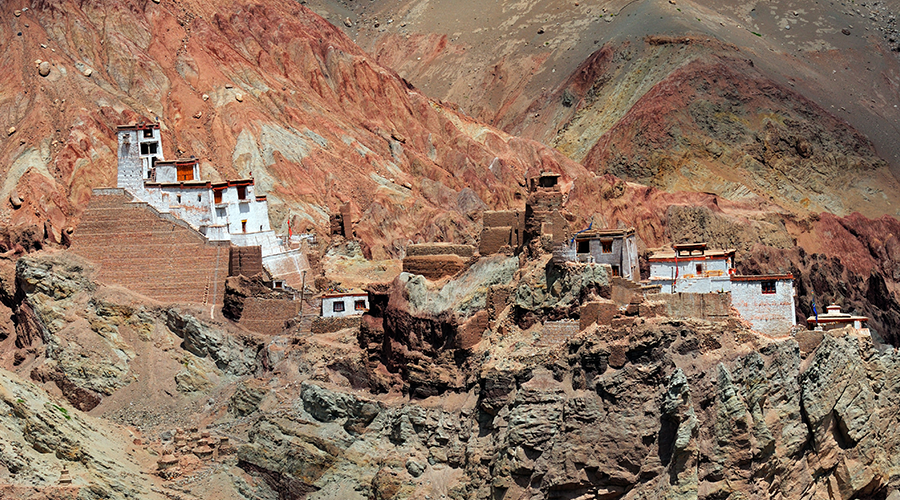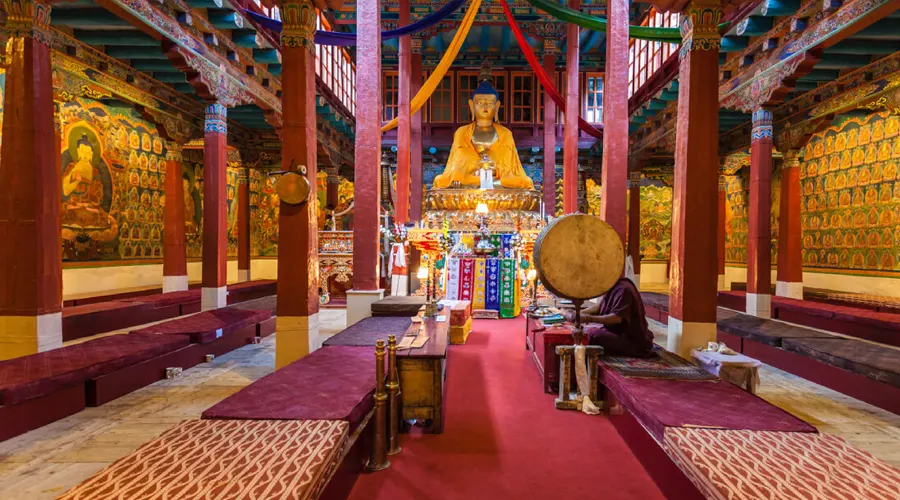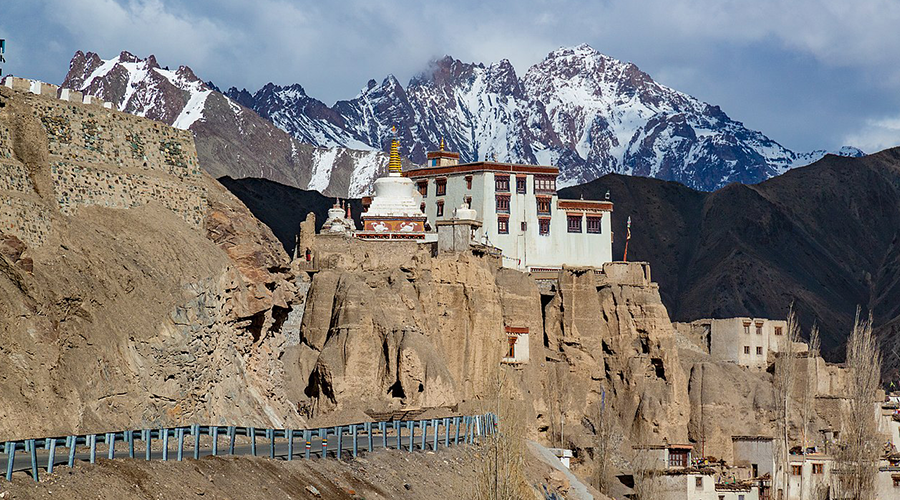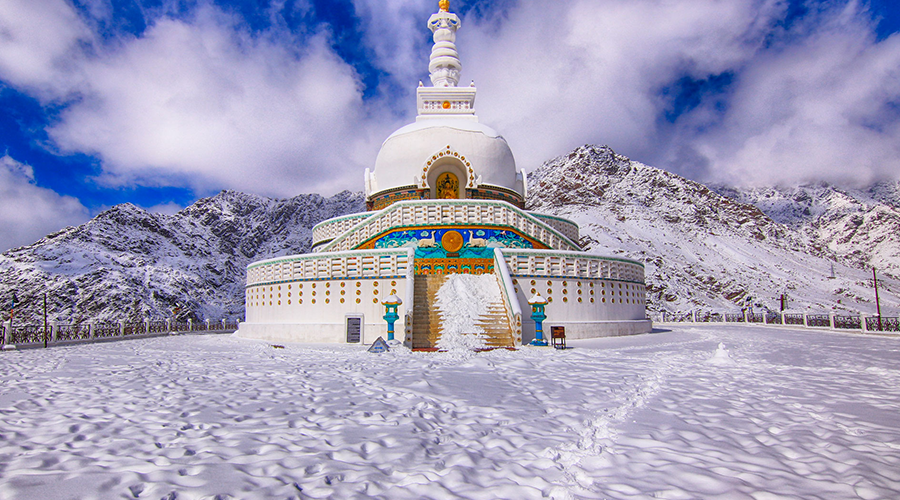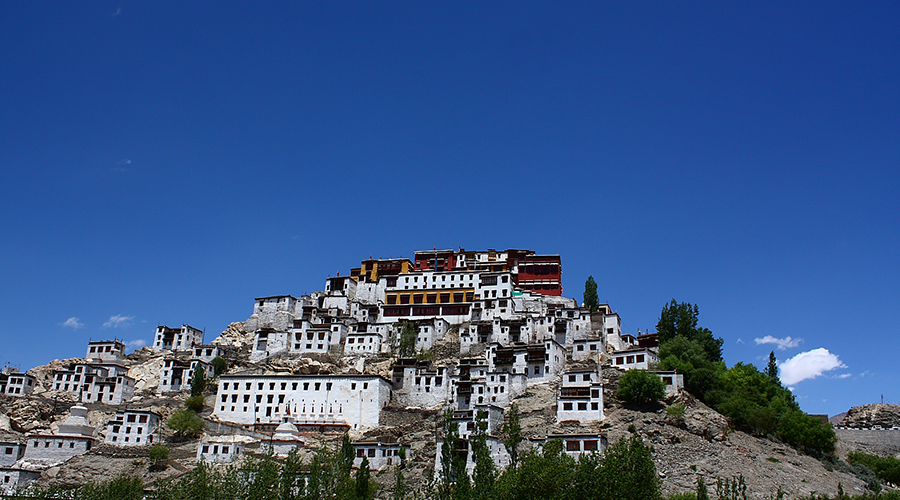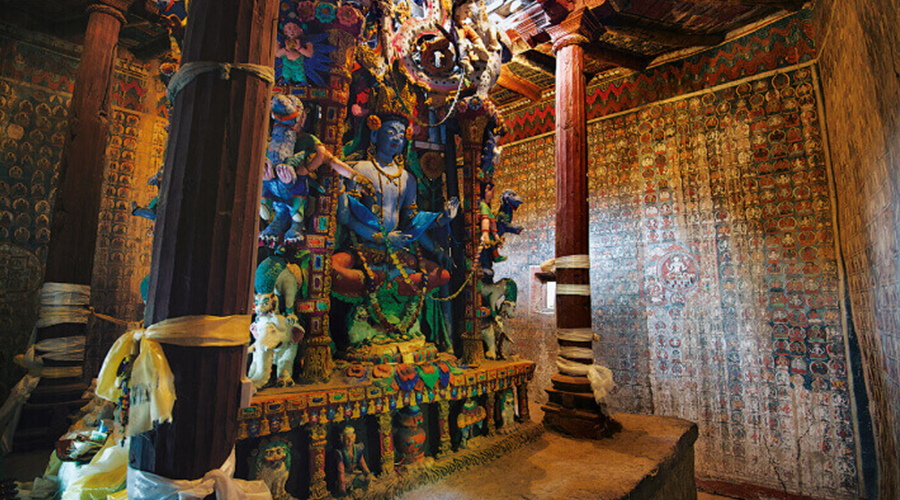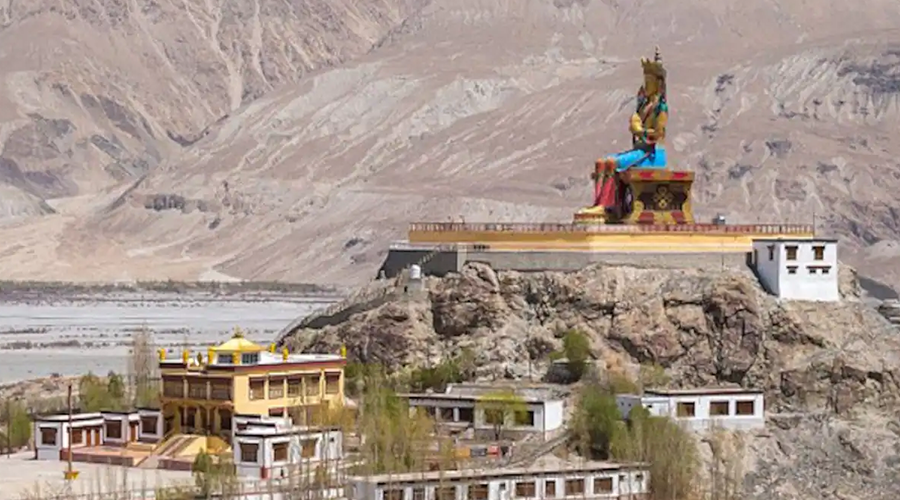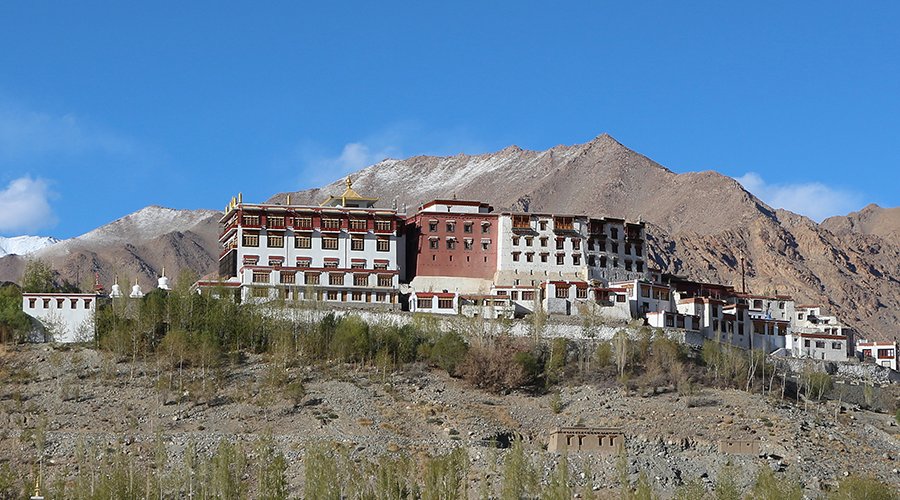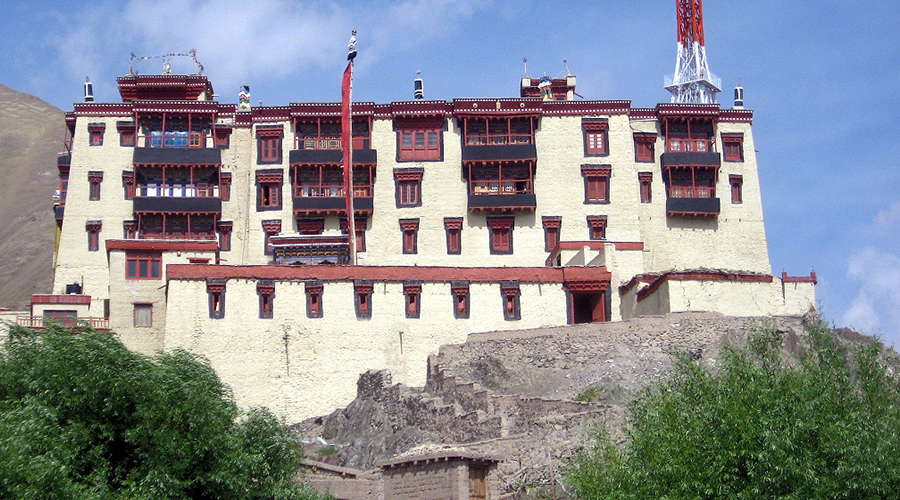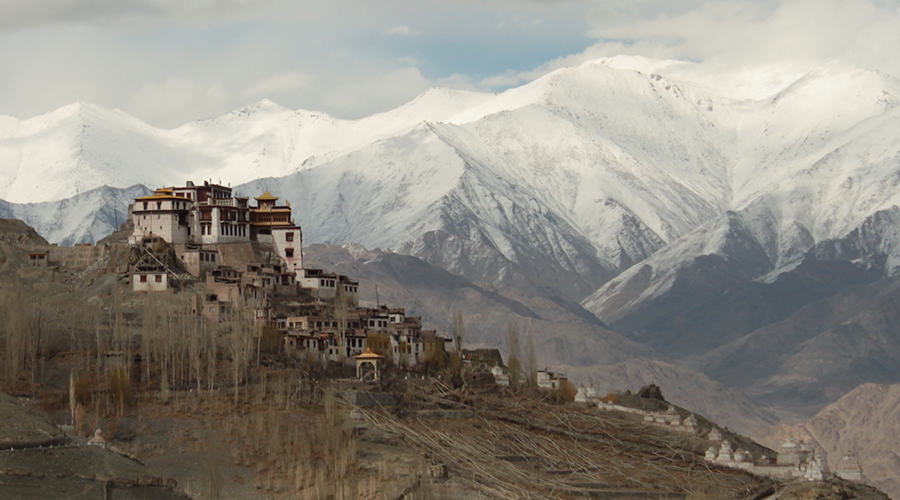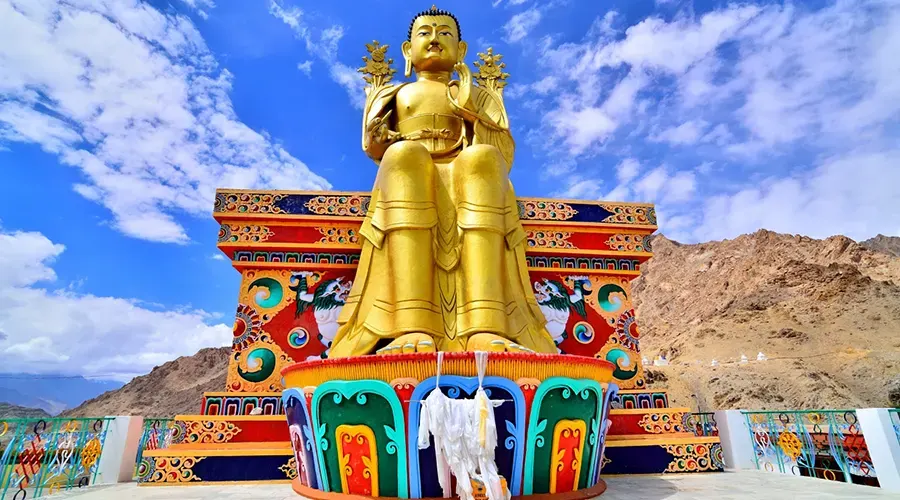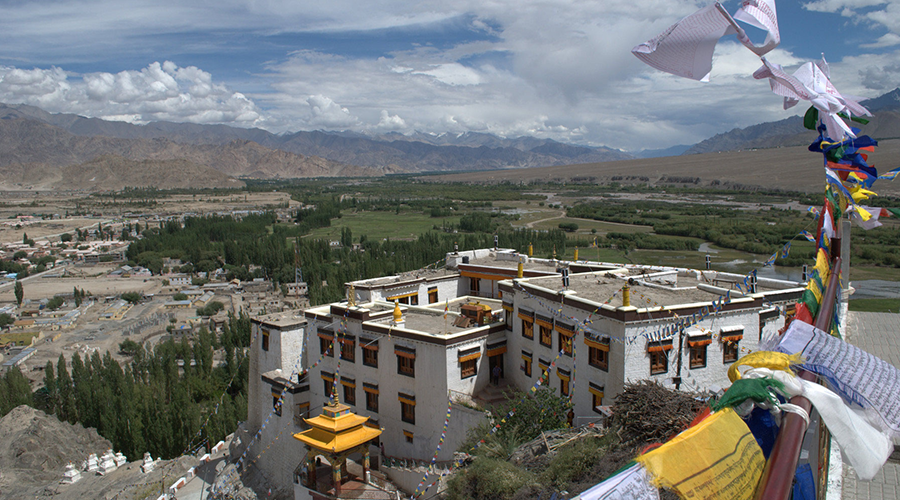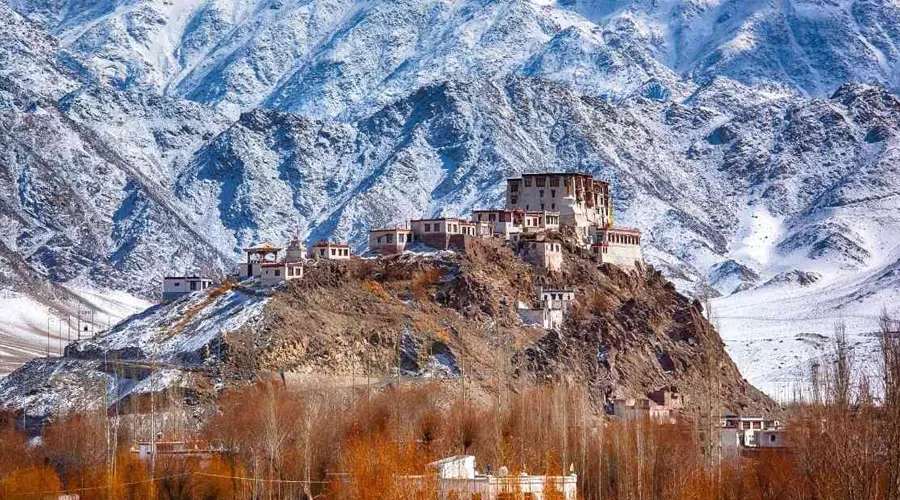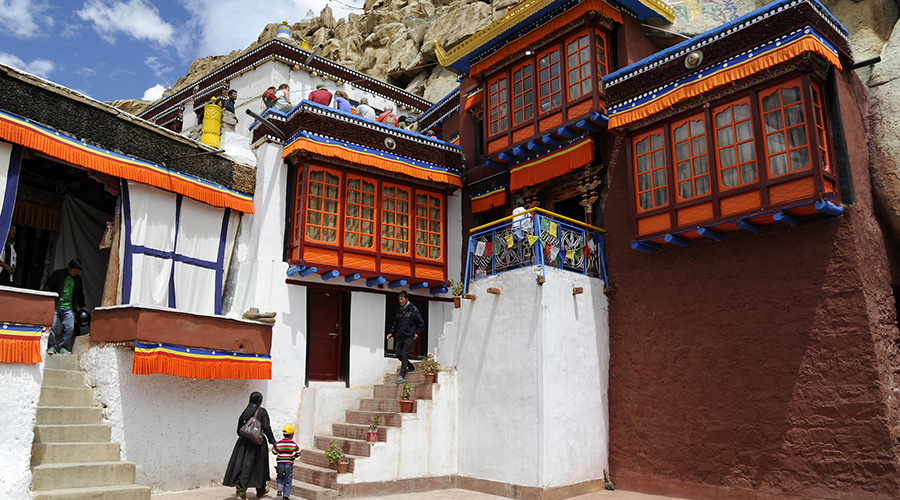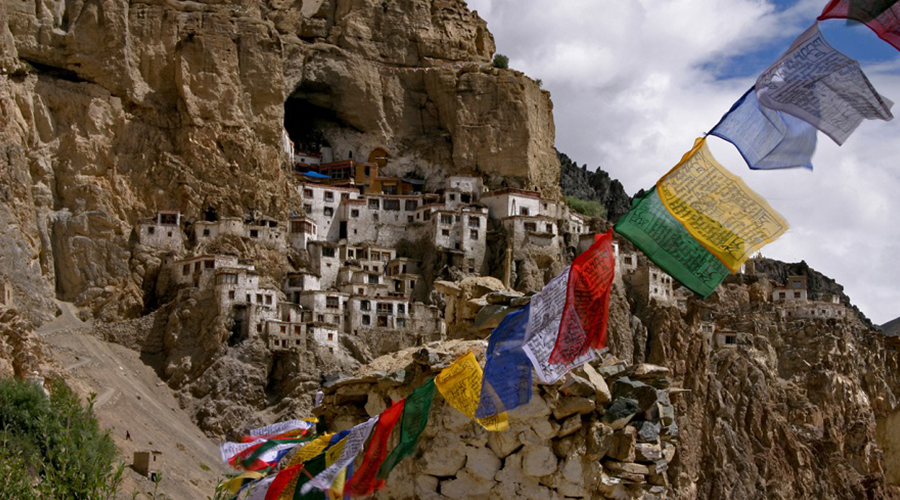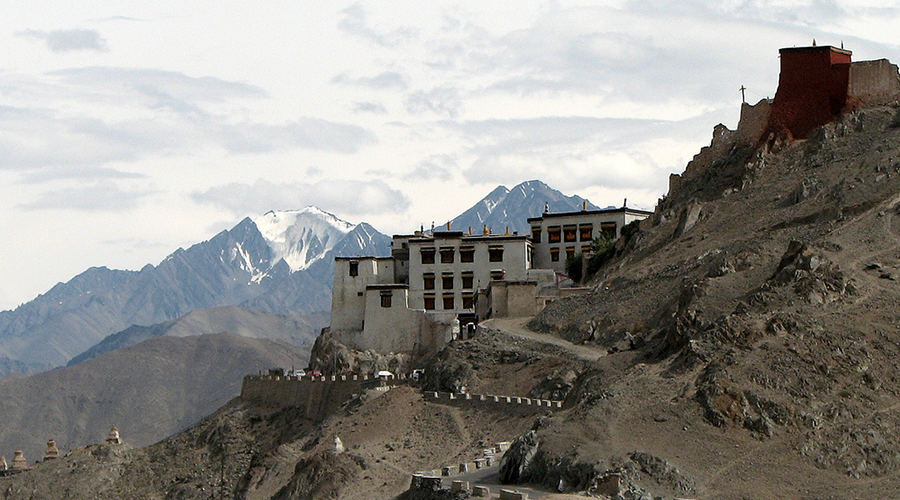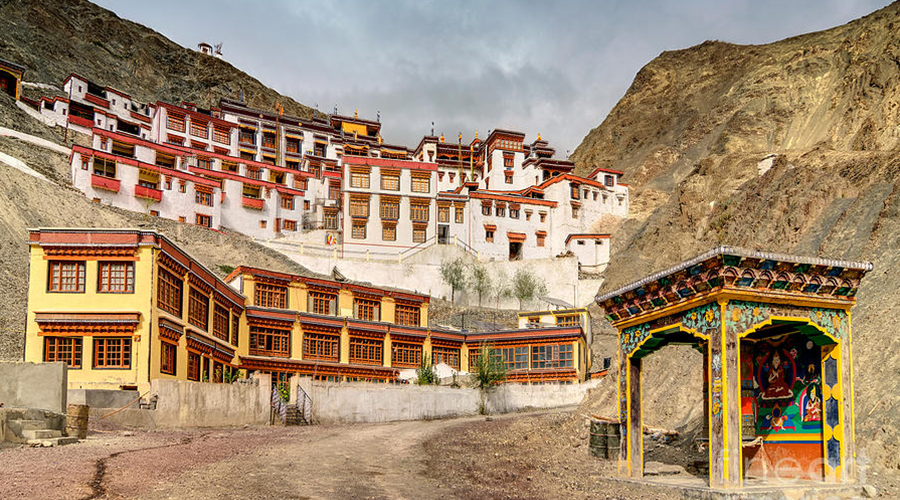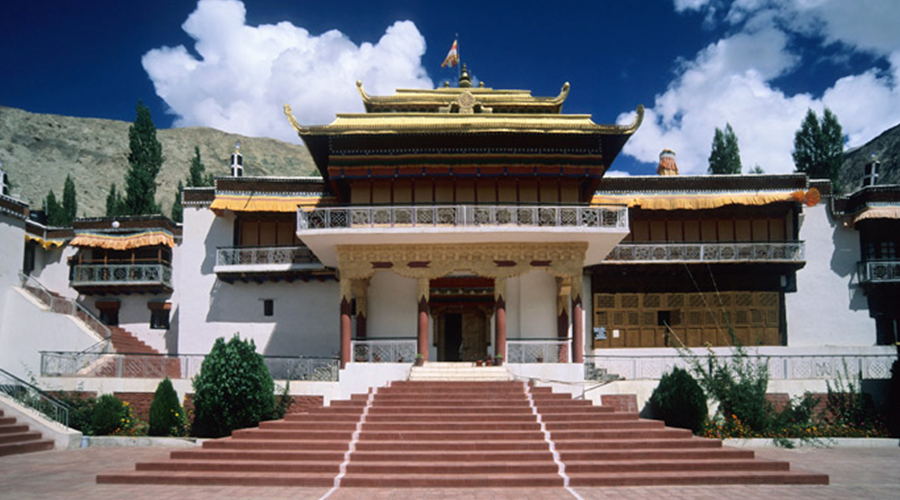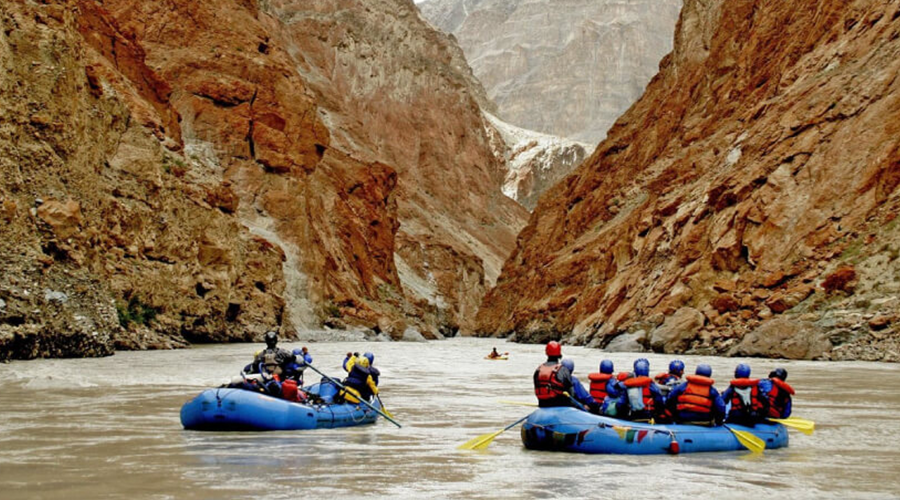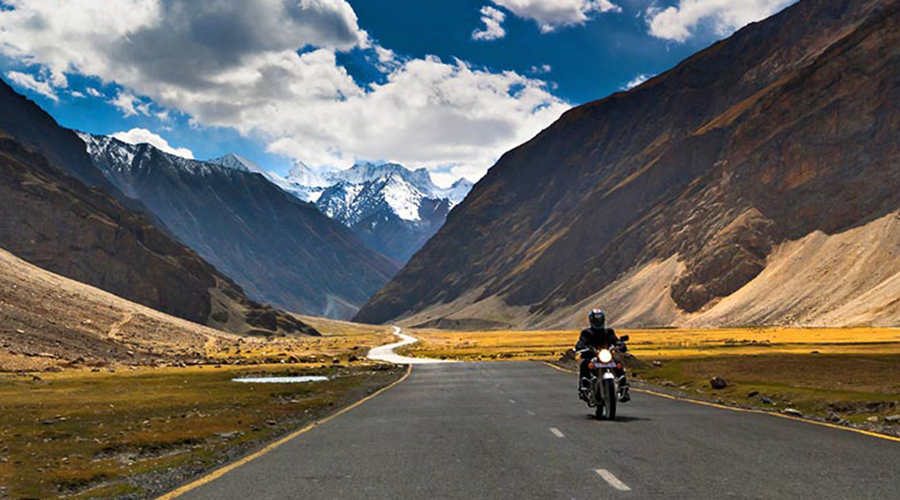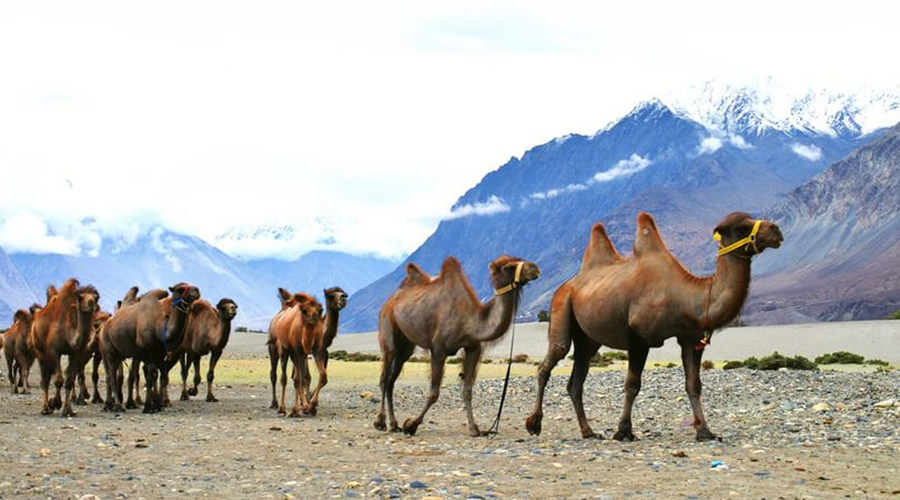Basgo Monastery
Nestled amidst the snow-capped mountains, Basgo Monastery is a strongly built spiritual center of Ladakh. This splendid monastery is 40 km away from Leh and is nestled on top of the cliffs in Basgo of Leh district, Ladakh. Basgo comprises a dark red base and sky-high temples on the steep trails. The wonders of the edifice boast of Maitreya temples, mural paintings, ancient architecture styles, and exotic surroundings. The three temples, Chamba Lhakhang, Cham Chung, and Chamba Serzang, are painted with Central Tibetan elements and style.
There are a plethora of activities to do at Basgo. Starting from the base, the temples are situated in ascending order. To explore the premises, you will have to hike a bit and stop by every spot. If you are an art or history fanatic, explore the ancient library or the mural paintings present at the monastery. Also, meditation is quite prominent at the Basgo Monastery. You can stop by and indulge in spiritual practices. Basgo has a cold climatic condition. The best time to visit the monastery is from April to June. The weather will be pleasant and the routes will be clear.
History
Basgo Monastery traces its history back to 1680. The edifice was built under the reign of Namgyal rulers to protect the premises of Basgo from the invaders. It was an important political and cultural part of ancient Ladakh. The political significance of Basgo was raised to the occasion in the 15th century. The ancient culture of Basgo Monastery resides in the libraries, mural paintings, etc. Also, its significance of sandstone rocks and dark red base of the spur dates back to the reign of the Namgyal rulers.
The history of Basgo was deep-rooted in the Maitreya temples with mesmerizing paintings, animal stables, uniquely built chortens or stupas, etc. The largest temple, Chamba Lhakhang, is situated at the highest point. The restoration work was done in the early 1980s by removing the ancillary chambers and roof. Whereas the Cham Chung temple has a conical roof and the Chamba Serzang temple was restricted for the royal family exclusively.
The development of art has also taken place magnificently. In 1979, it adapted the Central Tibetan style of painting for the first time. The painting in the Cham Chung and the Serzang temples followed the same elements and style. Although, religious developments majorly preferred tantric Buddhist tradition.

